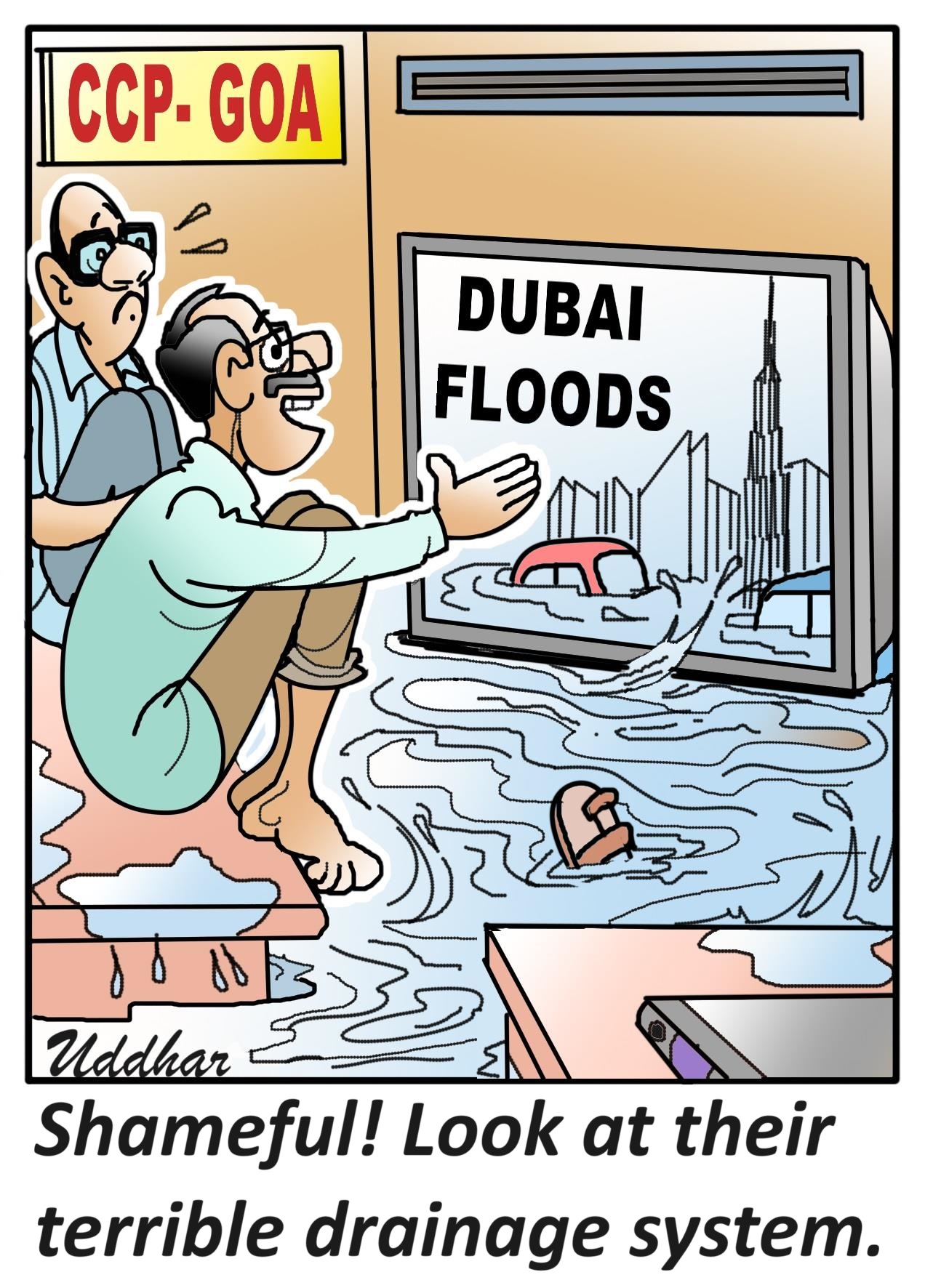
In the earlier two articles we explored the goals and inherent challenges - the “WHY” aspect and the critical “What” aspects, we now move on to the “HOW” aspect, here we will concentrate on the required systems for transition, installation and the execution of NEP on a sustainable and result oriented basis. We have six months at our disposal for building foundations, traction and if we invest it wisely, proactively, the State will not only be prepared for the transition to NEP from the next academic year but probably be the first State to implement NEP 2020 in a structured and systemic way.
For the ‘How’ aspect it is important to have a bird’s eye view of the current statistics of educational institutions in Goa which is as under
a)
Government Primary schools - North Goa = 334b)
Government Primary schools - South Goa = 394c)
Government Middle schools – (North & South Goa) = 38d)
Government High schools (Central & State) = 85e)
Government aided primary schools – North Goa = 128f)
Government aided primary schools – South Goa = 156g)
Unaided Primary schools -North Goa = 67h)
Unaided Primary schools -South Goa = 65i)
Government aided middle schools – North Goa = 13j)
Government aided middle schools – South Goa = 3k)
Government aided high schools – North Goa = 145l)
Government aided high schools – South Goa = 176m)
Unaided high schools (North &South ) = 29n)
Higher secondary schools (Govt. &Govt, aided & unaided) = 117o)
Special schools = 29p)
Colleges offering UG/PG = app.28 plusq)
Colleges offering BBA/MBA = app.10r)
Goa University(Reference – Directorate of Education -Statistics section)
A transformative change which is also a race against time, will need a select team as “drivers” and “Kurt Lewin” method comprising of the following 3 stages.
•
UNFREEZE•
MOVE•
REFREEZEThe Drivers
NEP execution will essentially need teams in place as under
State level – Secretary (Education, Revenue), Directors (Education, Higher Education, SCERT), Secretary Education, OD consulting Trust/firm/media representative preferably editors.
District level – Under Secretaries /Collectors/Deputy Directors (Education /SCERT), OD consulting firm/Trust/Principals/media representative Sr. journalists.
Talukas – Under Secretaries/ Principals/Sr.Teachers /Alumni/PTA/local politicians, Subject Experts /Industry Representatives.
Educational unit – Principal /Coordinators/Management committee/PTA/External experts/Students.
Kurt Lewin method
•
The UNFREEZE stage.NEP 2020 transition being a paradigm shift, somewhat similar to changing the engine of the jumbo aircraft while it is cruising at 30,000 ft altitude hence it is bound to face both overt and covert resistance, if the Doubts, Anxieties and Expectations are not constructively addressed may lead to reluctance or half-hearted engagement in its implementation which will defeat the very purpose.
The unfreeze stage will essentially need the following steps.
PREPARATORY STEP (by October)
•
Identification of the stake holders at State/ District/Taluka/Educational institute level.•
Complete internalisation of NEP policy document by each stake holder(thorough reading, notes making etc)BUILDING AWARENESS STEP (by October)
This will need consistent Media awareness campaign /Dialogues /Discussions/Deliberations amongst the stake holders and community at large and an open and transparent feedback system.
•
The MOVEstageOnce the unfreeze is in place the stakeholders trust and engagement levels move up and they are now cognitively and emotively ready for the ‘Move’ stage which essentially is ‘Solution architecting’ as under
THE DRAWING BOARD – BLUE PRINTS (November -December)
Taking cue from effectiveness, efficiency and utilisation datapoints of several National Health programs,to ensure a seamless journey for NEP, it will need both the approaches running simultaneously, like digging the tunnel from both the ends.
•
The Top down approach using Macro NEP model from State to District to Talukas to educational units.•
The Bottom Up approach using Micro NEP model from educational unit to Talukas to District to State.The Macro NEP model
(Figure -1)
How it works?
We need to move from right to left (refer figure 1) and analyse each block at a time and then its interrelatedness with other blocks, we start from ‘Strategy’ then move to People, Systems & Resources, Structure and Beliefs, this model needs to mapped at 3 levels
1) State – Macro NEP model
2) District – Macro NEP Model
3) Talukas – Macro NEP model
The Micro NEP Model
Micro model for NEP
(Figure 2)
How it works?
The model covers 6 core variables of an educational institute namely
•
Manpower (teachers/counsellors) deployed•
Methods of teaching•
Measurement of effectiveness•
Materials used for teaching•
Machines – the automation, digitisation•
Management -Environment of the educational unitThe ‘Move’ stage will carry out the following
A)
SENSING AUDIT – CAPTURING THE EXISTING GROUND REALITIESBefore we jump into NEP compliance it is essential to scan the ground realities at State level, District level and each Taluka level factoring the variance in the socio -cultural-economic and political conditions.
Covidhas severely impacted the educational system and its morale - with suspension of physical classes for almost close to 2 years, dilution of syllabus, haphazard online transition with connectivity, challenges, mental, stress levels hence both subjective and objective assessment of ground/existing reality is a prerequisite.
The sensing audit scope should essentially cover the following.
•
The readiness quotient for the NEP 2020 as per the New Pedagogical structure namelyFoundational/Preparatory/Middle/Secondary/Higher secondary /UG•
The current /existing capacity/capabilities for each block (Macro NEP model) and 6M’s of the Micro NEP model.Sensing can be done by applying using Kepner Tregoe model [1] on each component of the Macro and Micro model.
Sensing reports should be tabled for iterative deliberations in a time bound manner.
If Rigour and commitment are assured ‘Sensing’ can be completed in 2 to 3 weeks.
B)
DIAGNOSTIC - THE STRENGTHS /THE GAPS IDENTIFICATIONIn this stage the patterns emerging out of the ‘Sensing stages’ needs to be studied analysed to understand the square wheels /strengths/gaps.
Diagnostic stage will help us understand the pain points at each levels and also at specific locations (refer the Macro and Micro model).
The effectiveness of Diagnostic is directly proportional to engaged iterative deliberations preferably with a third-partyas a moderator and to make it happen we need to create a war room using techniques like ‘FFA’ -Force Field Analysis [3]
Figure (3)
FFA also gives required space for each stake holders to place their opinions/perspectives/concerns/ideas leading to engagement.
FFA also stimulates the constructive collective thinking as it offers the stake holders with multiple options to reach the goals.
•
The REFREEZE stageThis stage will be in two parts the Pre-go-live (testing) and Go Live (traction).
The Pre -Go-live part will have the following plan
A) INTERVENTIONS – NEP PILOT PROJECTS (January to March)
This is the stage were the NEP framework gets deployed on an experimental basis using thequalitative and quantitative data generated in the Diagnostic Stage, this stage calls for kick starting a time bound (3 months)pilot project at educational units both in North and South Goa, these experimental group should essentially have the following
•
One Primary school•
One Middle school•
One High school•
One Higher secondary school•
One UG collegeOne needs to ensure that in the intervention stage the capacity and capabilities of all the blocks of Macro model and the 6M’s of the Micro model are enhanced, refurbished and rejuvenated.
As the pilot takes off, weekly plan versus actual need to be plotted using mapping techniques and monthly in-depth review using participation observations, focussed group discussions, content analysis, 360 degrees feedback, assessment centres is must and based on the same continuous course corrections need to be done to ensure that there is no derailment.
B)
ACTION RESEARCH (April)The achievements/short comings of the ‘Intervention’ part needs to be compiled shared and deliberated in order to make a robust model for the ‘Mega launch’ for the next academic year (June 2021)
The Go-live (Traction) (May)
A comprehensive Macro and Micro model and SOP to be re drafted based on the experiential learnings and ‘Action research’ findings at all the levels namely State /District/Taluka/Educational Unit.
For traction one can create a SPV (Special Purpose Vehicle) or use a Build Operate Transfer) model for a minimum period of 3 to 5 years with a caveat that the educational units eventually become self-sufficient to run NEP on their own.
NEP needs critical mass of local change agents from diversified backgrounds preferably those who are deep rooted in Goa’s socio cultural fabric and are passionate to contribute.
Goa has the critical mass of experts /unsung heroes /retired competent academicians/senior bureaucrats, philanthropists. We need to first visit our back yard before we blindly rush hiring MNC consulting firms for NEP execution.
A robust and thriving education sector is central to Goa’s quest for equitable, inclusive and sustainable growth, hence building a society which provides equitable access to opportunities negates disparities is a collective responsibility.
NEP 2020 presents a unique opportunity to stand up to the challenge. It is a call for action. This can only happen if collective authorship precedes collective ownership.
NEP has a lot to offer in terms of ROI and ROTI we will cover that in our next article titled ‘NEP 2020 and the way forward’ .
References:
Figure [1] – 364 days of Transformation
Figure [2] – Ishikawa diagram /Fish bone analysis
Figure [3] – Kurt Lewin FFA model
Table [1] – Kepnor Tregoe model
Article compiled by
Kishore Shah - Managing Trustee: GDP Foundation
Shivram Krishnan – Director: GDP Foundation
Col Sukhaman Singh (Retd): Dep. Director: GDP Foundation
Email [email protected] /
www.gdpideaz.org
